If you don’t know what a privy is, much less the contents of one, well, this should be an eyeopener. In this case the privy was, a real long time ago, an outhouse in the backyard of Maplewood’s oldest home…Woodside. If that seems kind of icky, it was back then. But the microbes have done their jobs. All that was left was really good mulch.
I have written much about Woodside and the effort to save it in the past. If you don’t know that story you can link to some of the past posts here.
As part of the deal to save Woodside, condominiums were built in the side yard. In early 2005, I was at Woodside while an excavator was digging the hole for the foundation of the condos. He was removing a lot of beautiful yellow clay. I had evidence that there once had been clay mined on the Rannells farm. I was wondering if this was the type they were after.
All of a sudden in the far northwest corner of the excavation, the machine exposed a large lot of coal black soil. It had many bottles and other stuff sticking out of it everywhere! I hollered at the operator to hold up. I jumped in the pit and began pulling the bottles and other fragments out of the soil. About that time another volunteer, Marty Fischer, showed up. We were both trying to salvage what we could before it was destroyed.
Sensing that the operator’s mood was not being improved by the two of us preventing him from completing his task, I asked him to scoop up all of the black soil and deposit it on the lawn. Then, somehow, we got in touch with Tim Baumann, a professor of archaeology at UMSL. He brought us a couple of wooden frames with screens in the bottom so our volunteers could sift through the soil and wash the dirt away with a hose.
This was my first experience with archaeology in the field. If you have never done this sort of sifting, I highly recommend it. It is very exciting to recover the artifacts, of course. But what was totally unexpected to me was what can be seen during the process. All sorts of things have been discarded in a privy. Many have totally decayed and been replaced by dirt. They are not there anymore but you can watch them reappear as you melt away the dirt with the hose. Then they are gone again. This time for good.
Since this had been a privy behind a farmhouse, some of the shapes I melted away looked like corn cobs to me. Or was I just imagining it? Whichever, it was fascinating.
In this manner we recovered a large number of fragments. These were then taken to UMSL by Professor Baumann where his grad students cleaned, sorted and cataloged them. Originally there were thirteen good size boxes containing the multitude of items in plastic bags that had been numbered. To try and make space for them in my basement, I combined and eliminated three of the boxes. My hope is that someday these items will join the collection of historic items at the Maplewood Public Library.
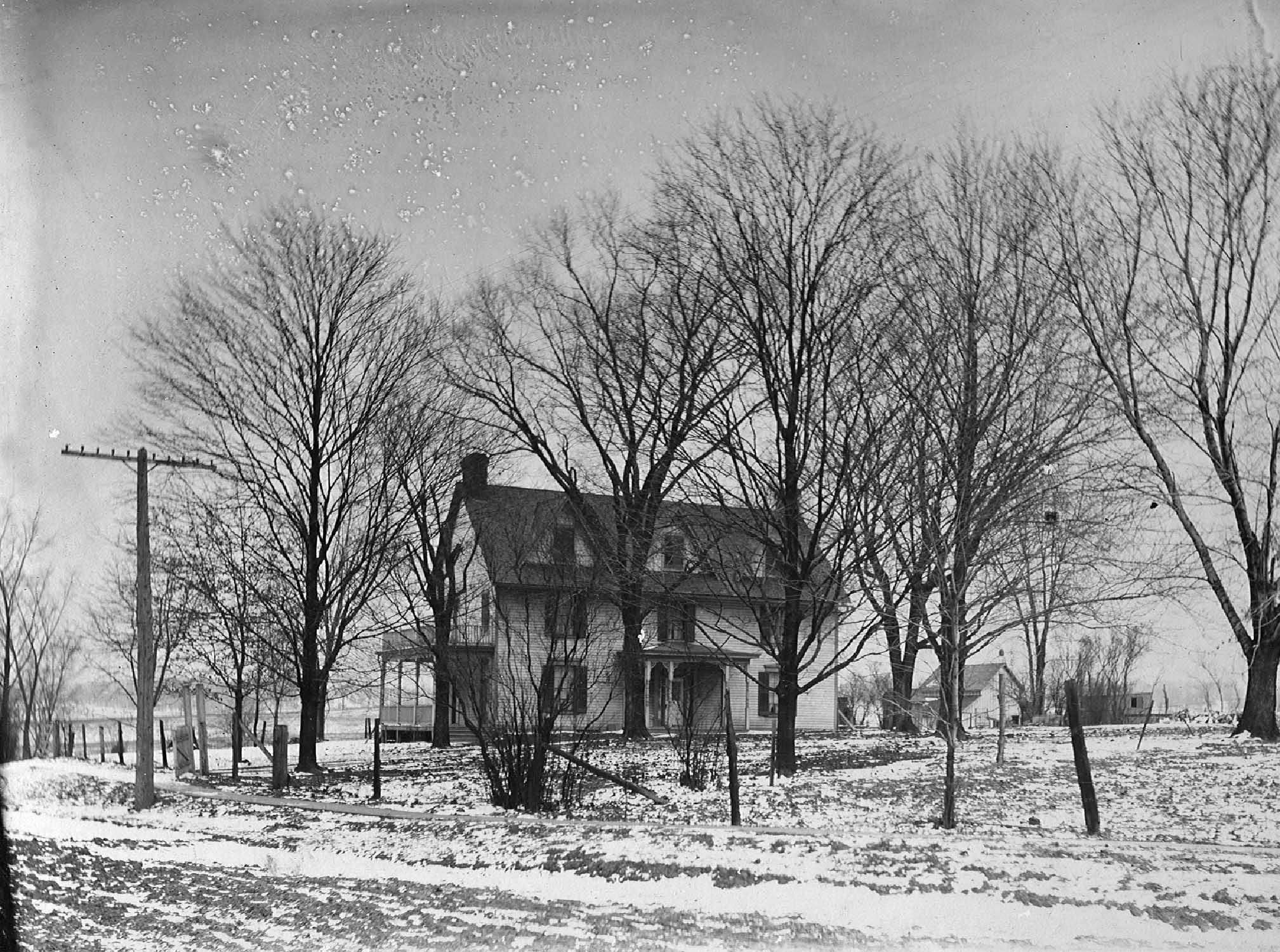
Woodside, at 2200 Bredell, the farm home of Charles Samuel and Mary Warder Rannells, is the oldest building in Maplewood as far as I have been able to determine. This image is believed to have been made in 1904.
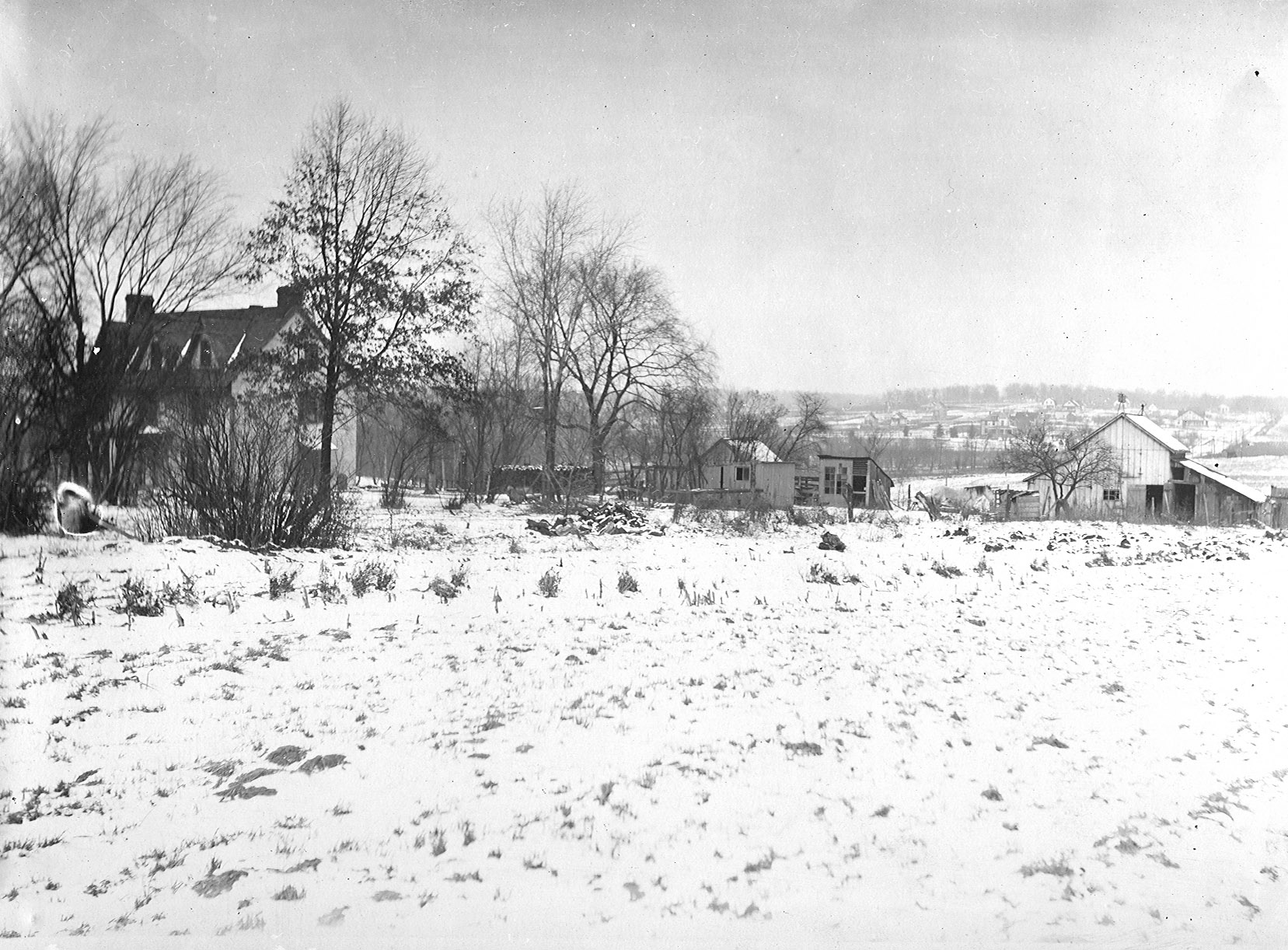
This image was apparently made at the same time as the previous one. The view is looking to the north. This privy was long gone when this image was made. It had been located about 20 or 30 feet behind the house and slightly to the northwest. Down wind most of the time, as one might expect. The archaeologist, Joe Harl, correctly identified what turned out to be the location of the privy judging by a depression in the yard.
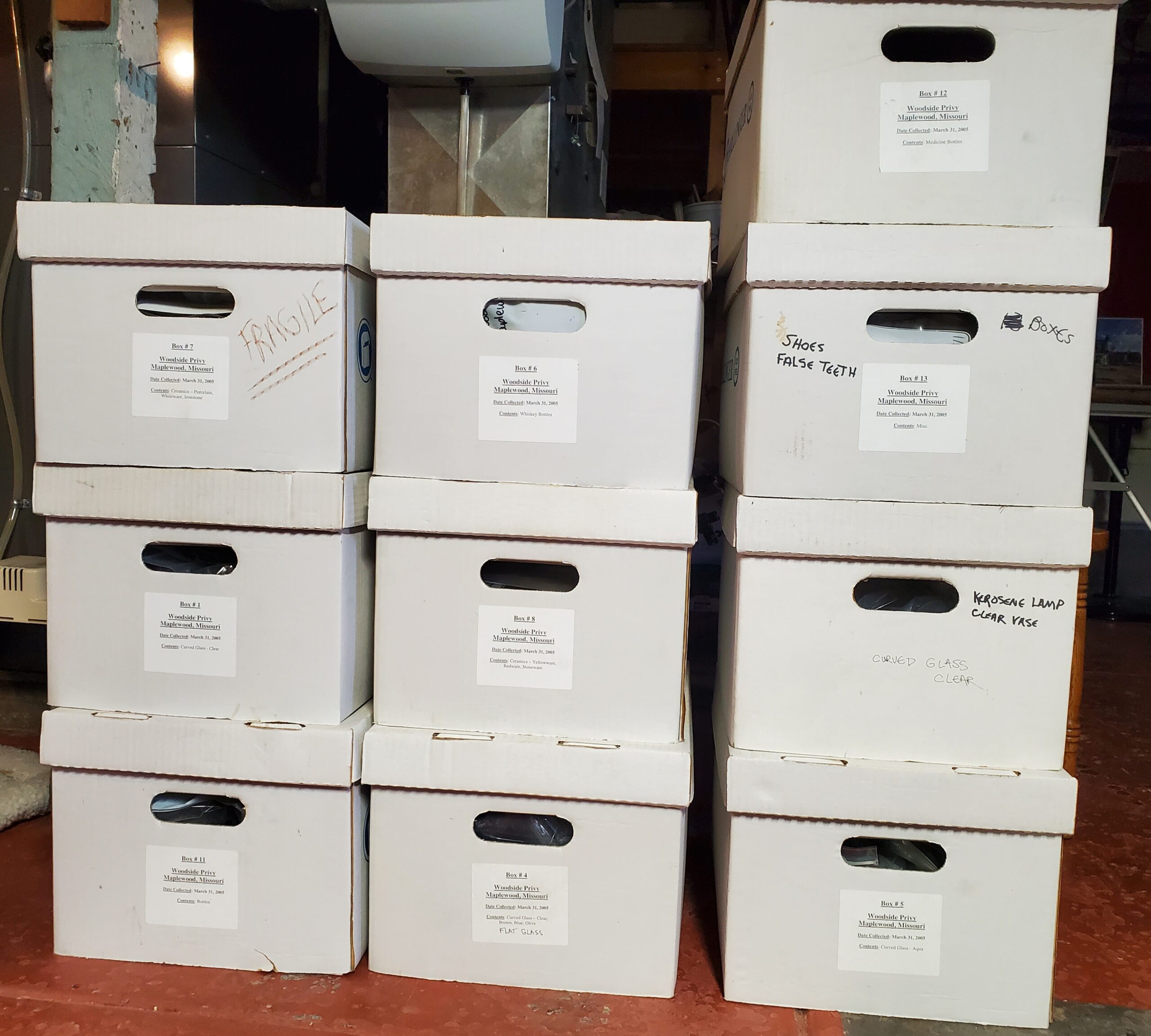
These are the boxes, stored in my basement since 2005, that contain all of the artifacts that were found in the privy location. In this post we’ll look at the partial contents of just two of the boxes. Box 12 contains about 40 medicine bottles. Box 7 contains ceramics.

Recently, my neighbor, Kristen Tillitt, who is an archaeologist by profession, made a thorough inspection of all of the artifacts in all of the boxes. Her husband, Darcy, came along. The process was very enjoyable.

All of the artifacts are stored in separate, archival, plastic bags.

A grad student of Professor Baumann’s named Amy Creasy (now Clark) was responsible for much of the work and research in this project.

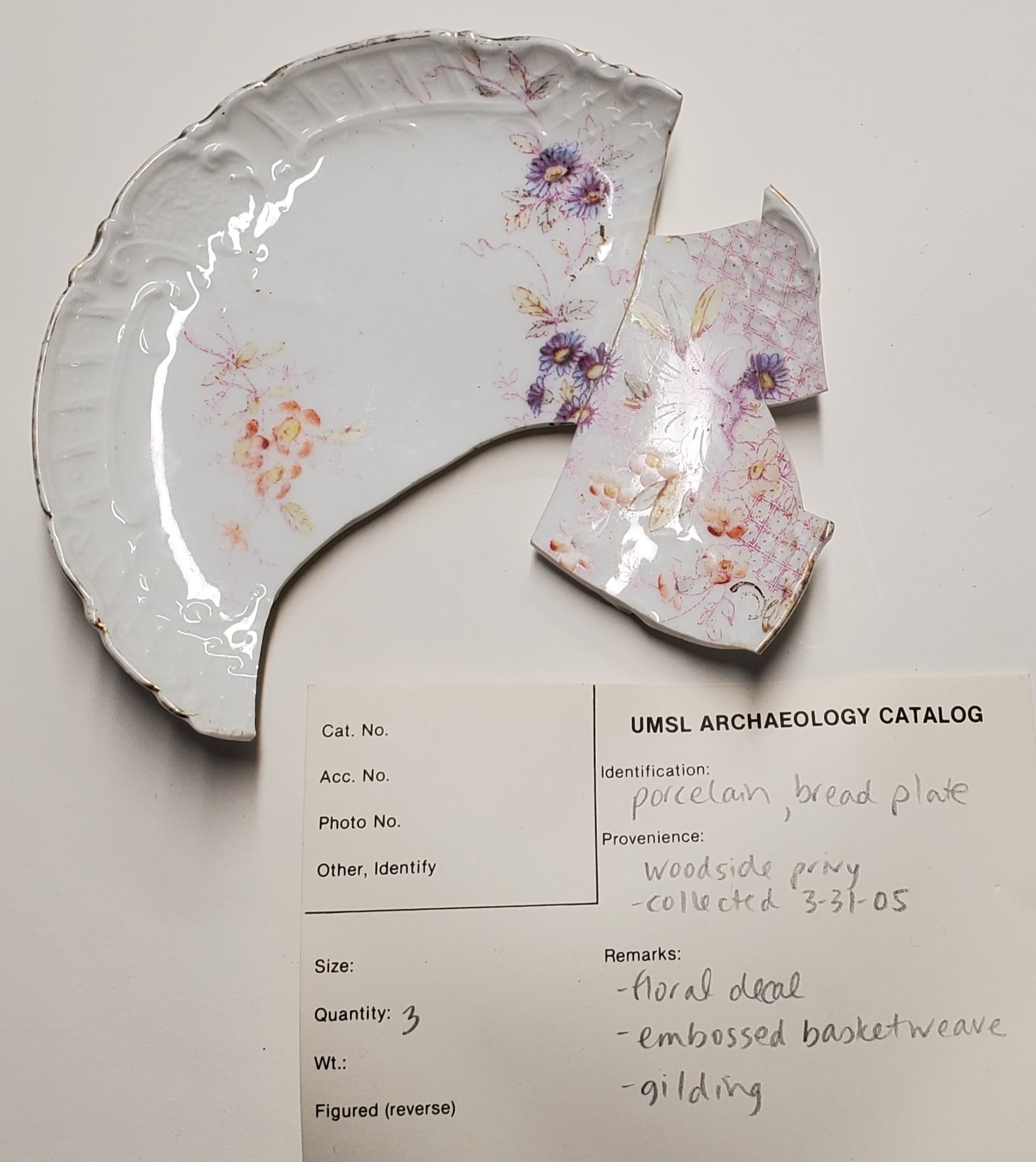
Some of the pieces have been partially reassembled by the students.

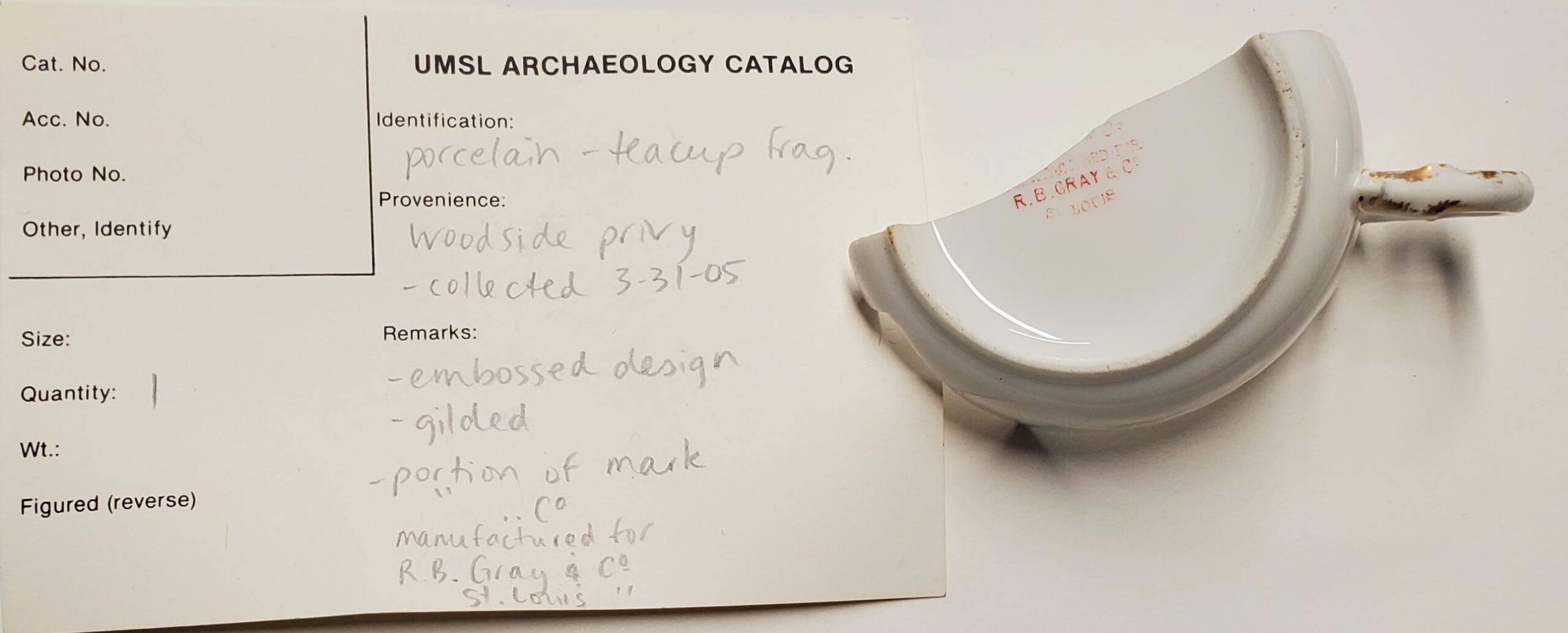

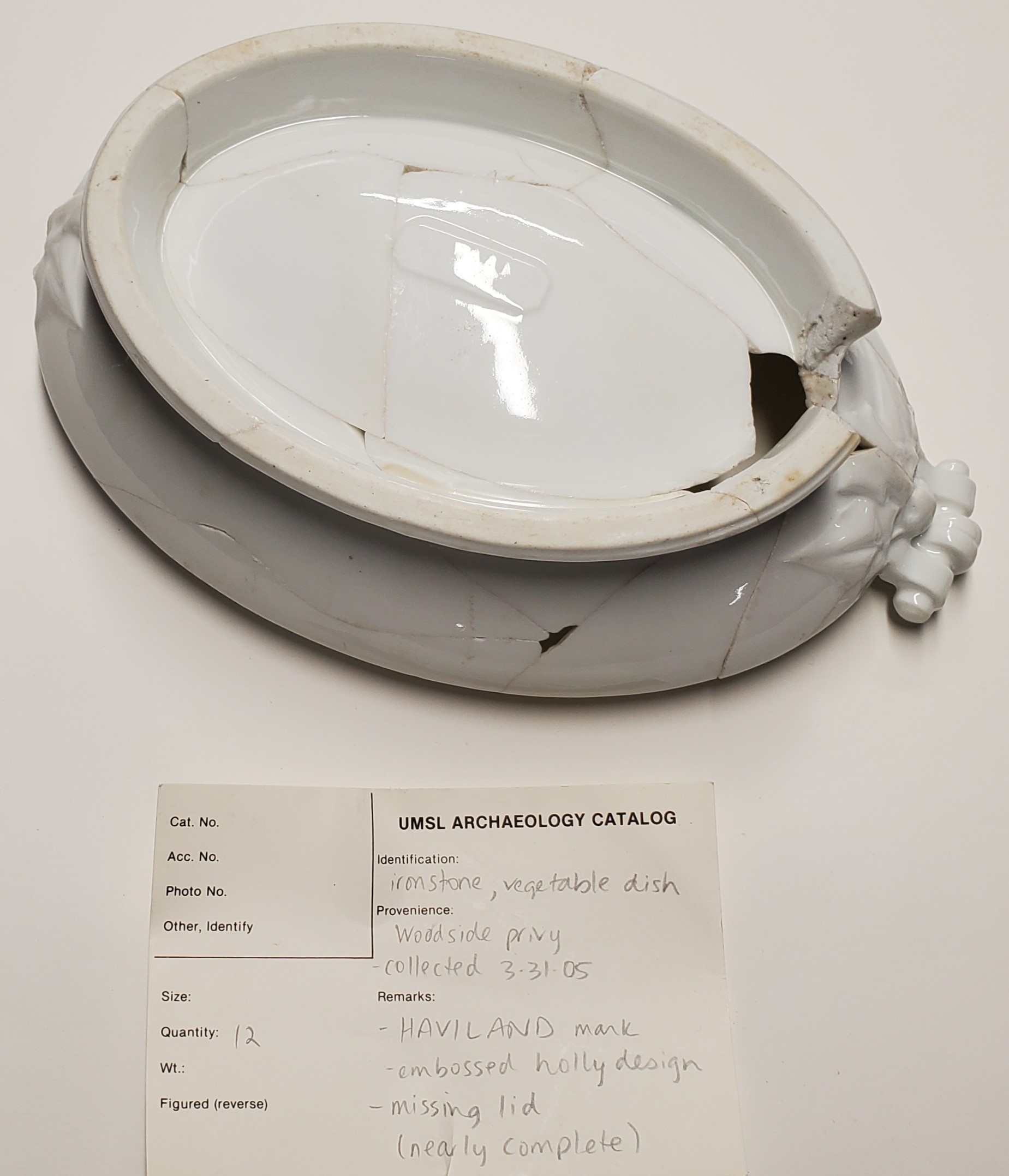
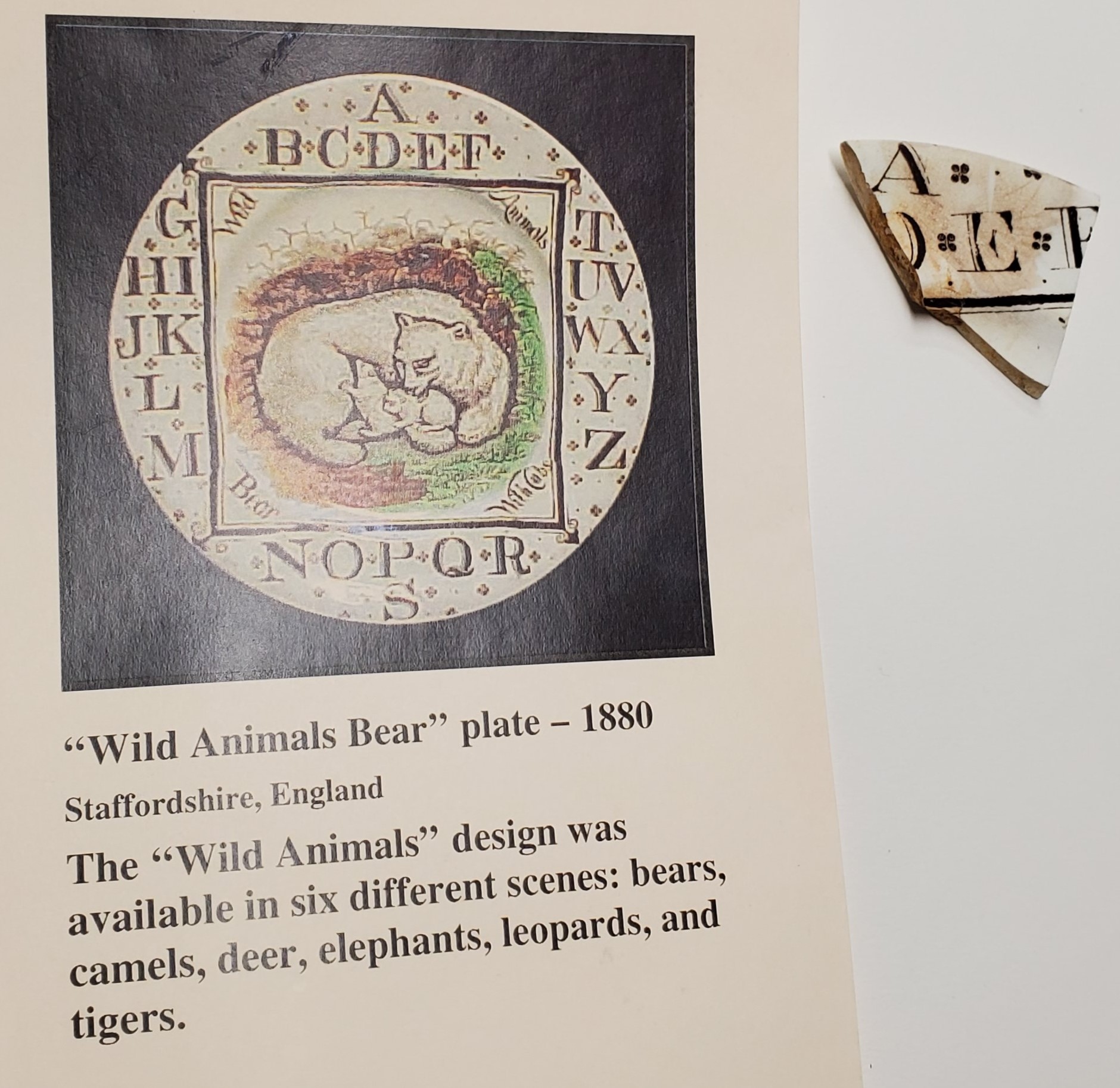
Using just the fragment, Amy and the students were able to determine what this whole plate had once looked like! And before AI!
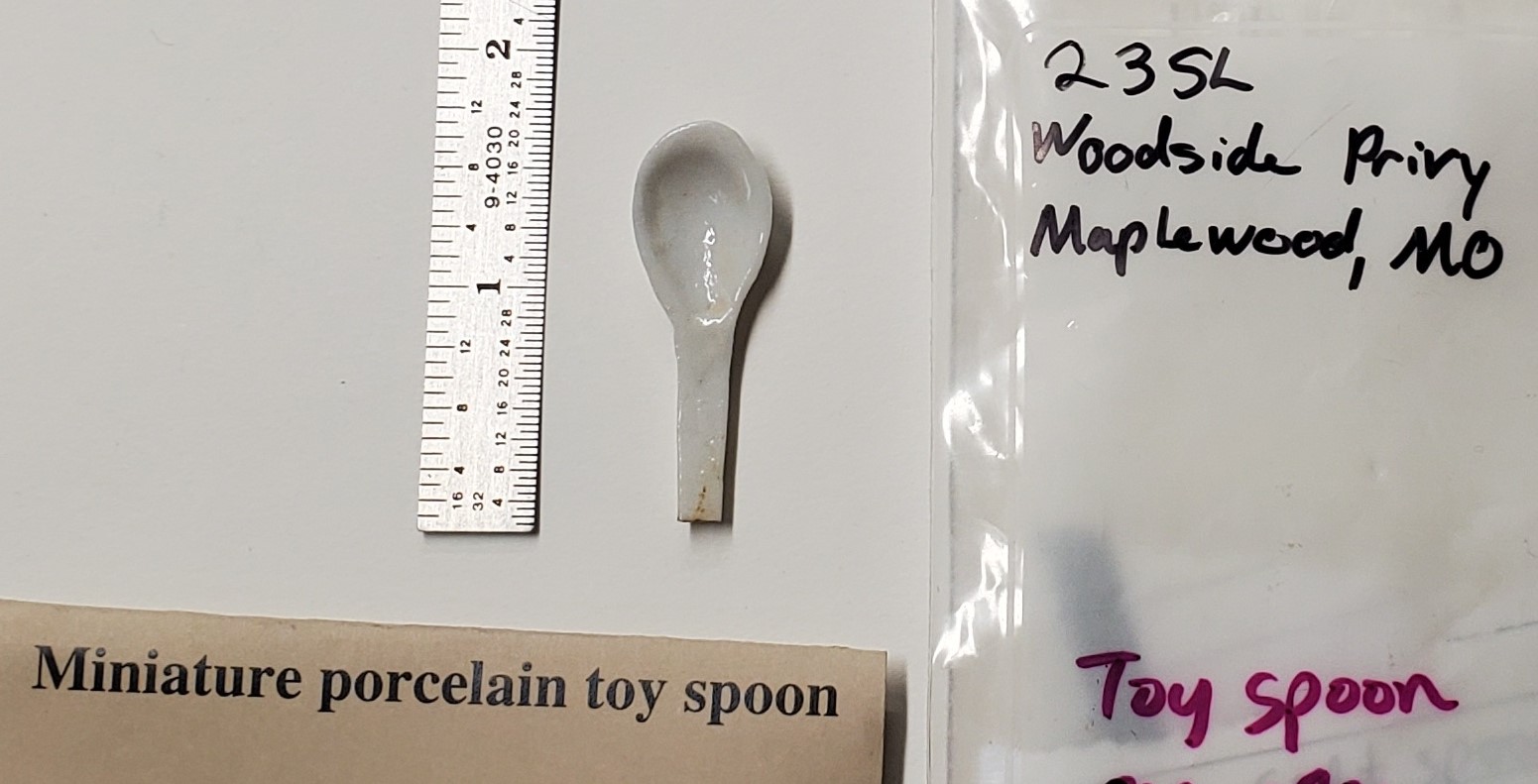
We know there were children at Woodside from our research, but if we didn’t…
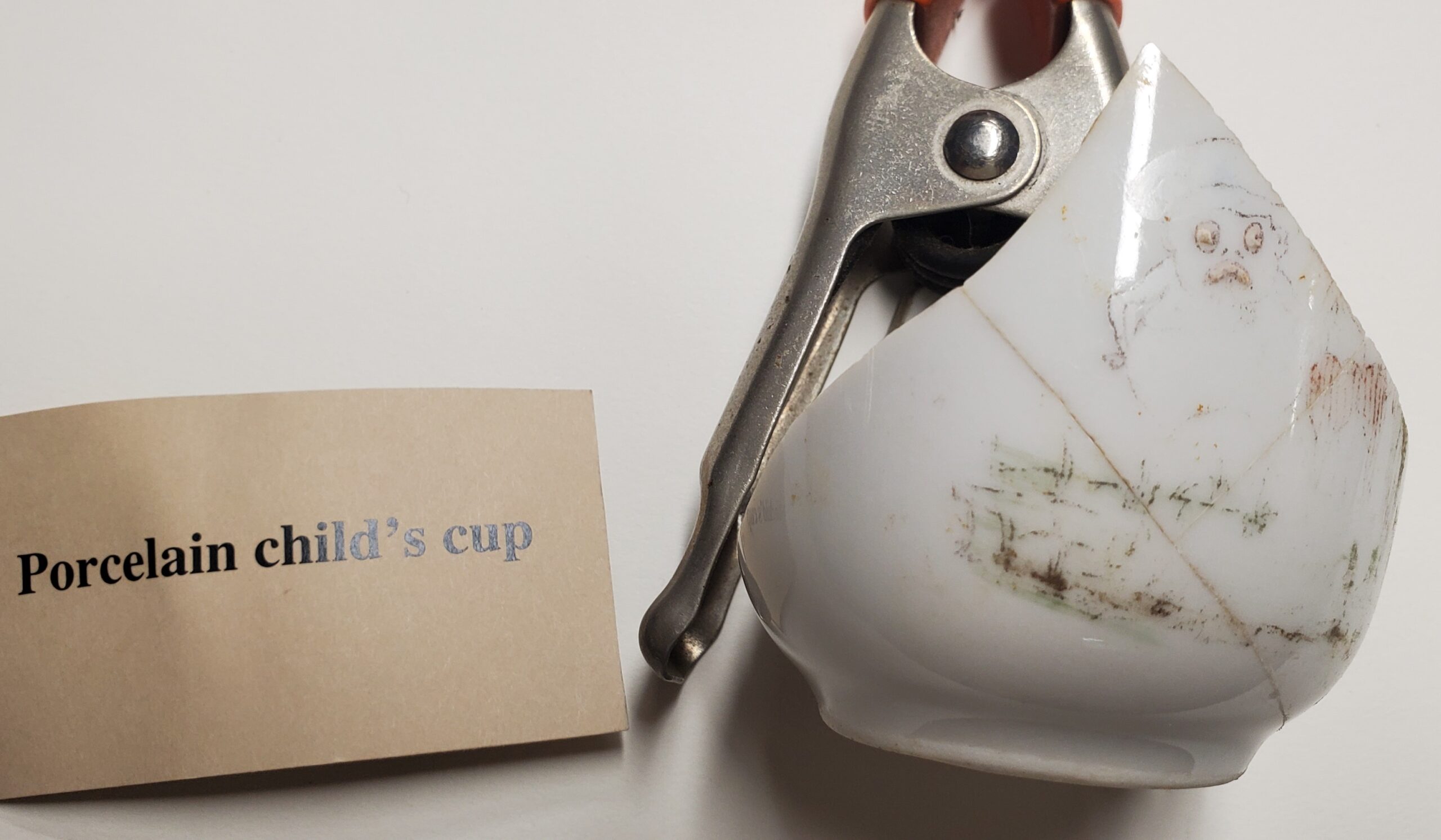
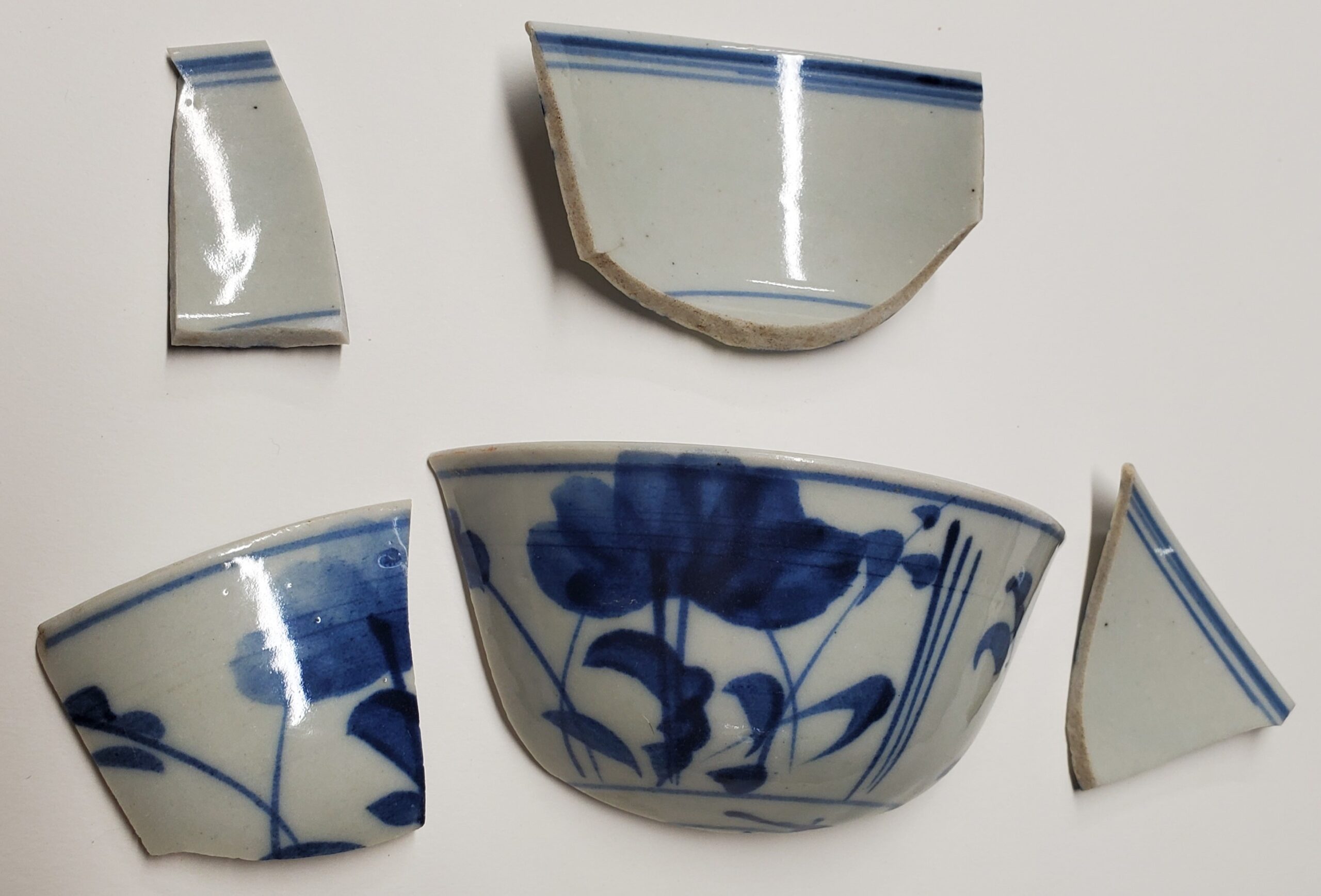
There were fragments galore. The Woodside site was a treasure trove of items of interest to those who care about the history of our community and wider. I say was because the entire site was lost during the restoration of the building. The 1850 home known as Woodside was jacked up, the footprint was bulldozed and the foundation was removed and replaced with a modern one of concrete.
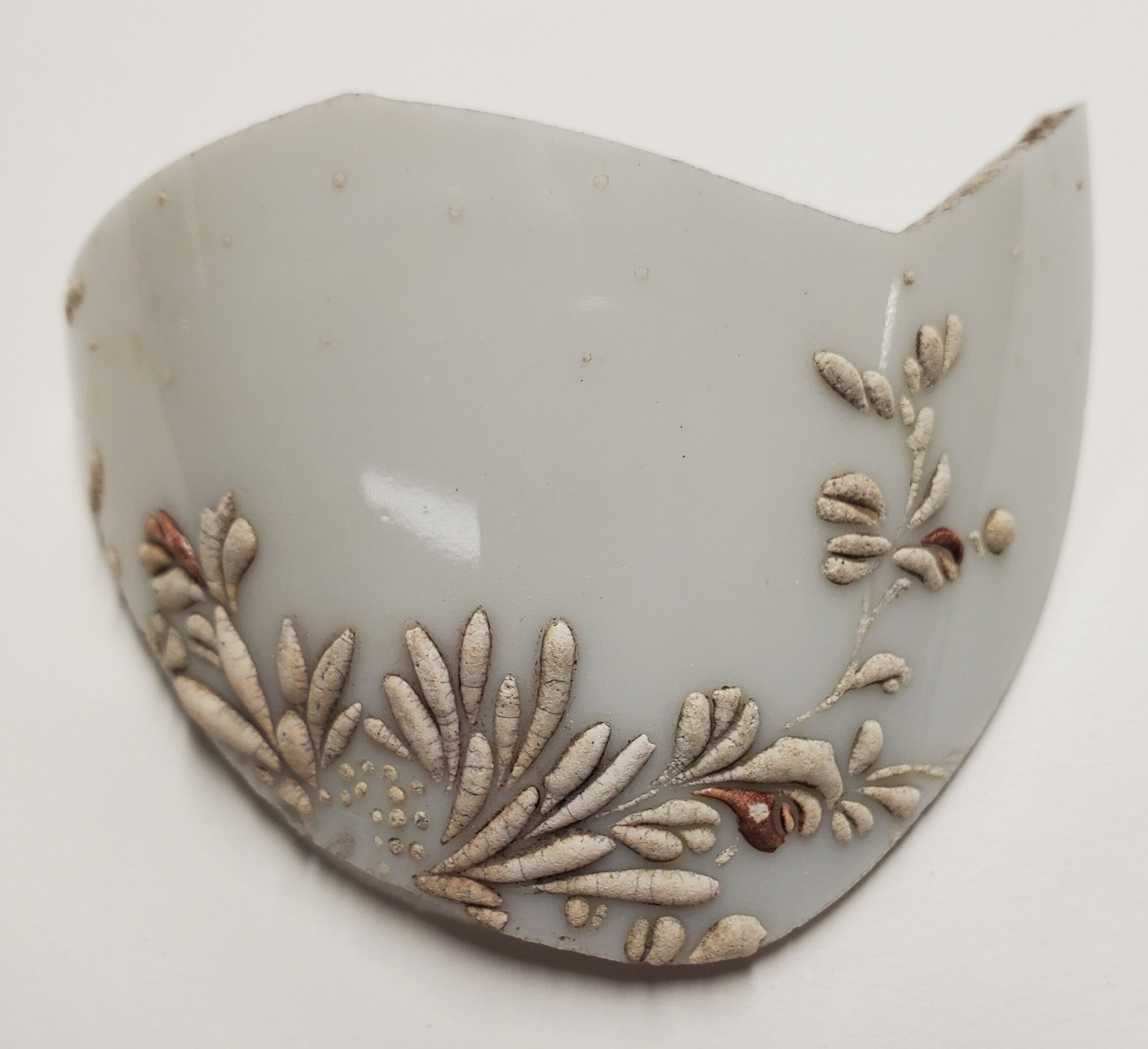
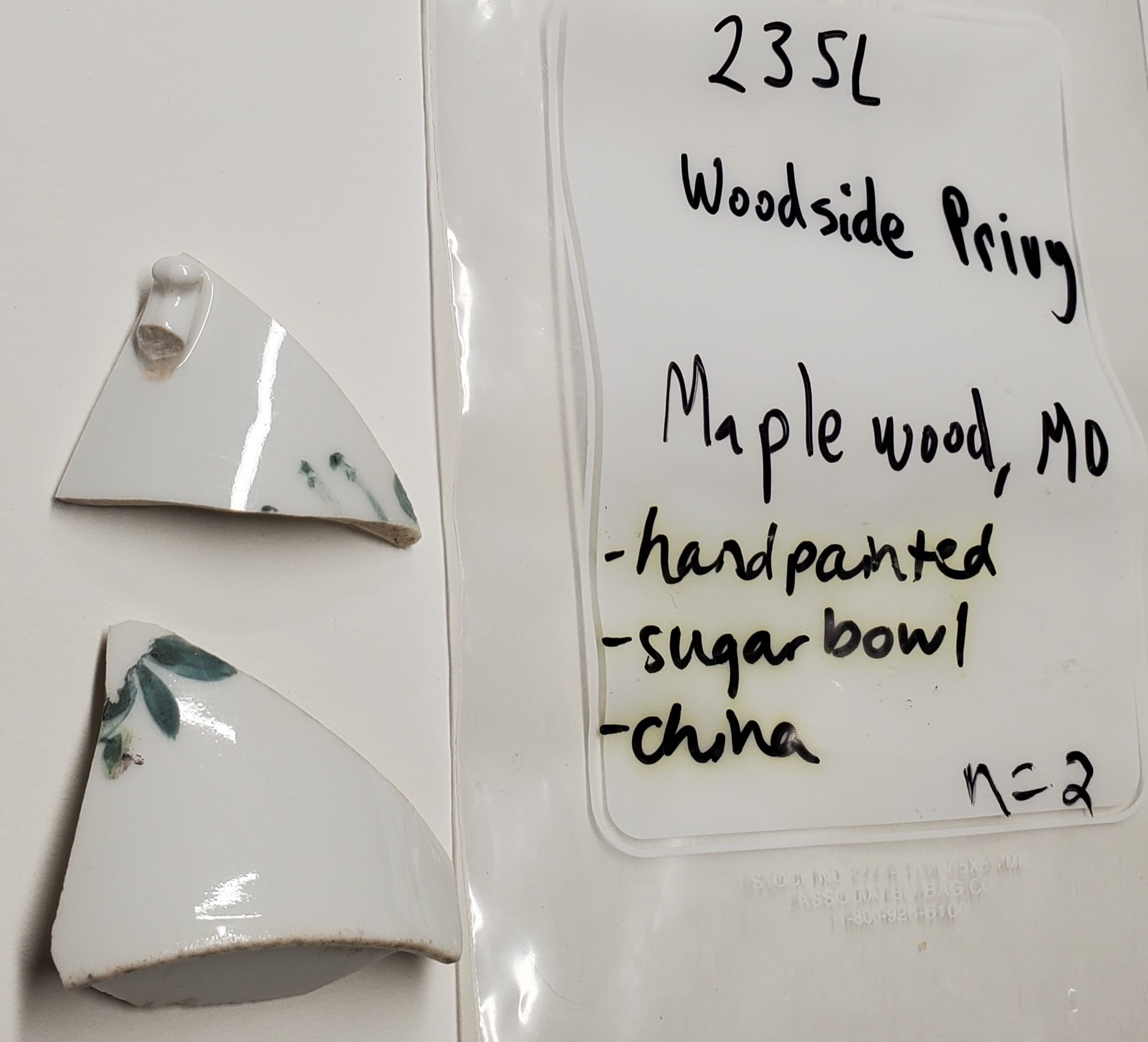
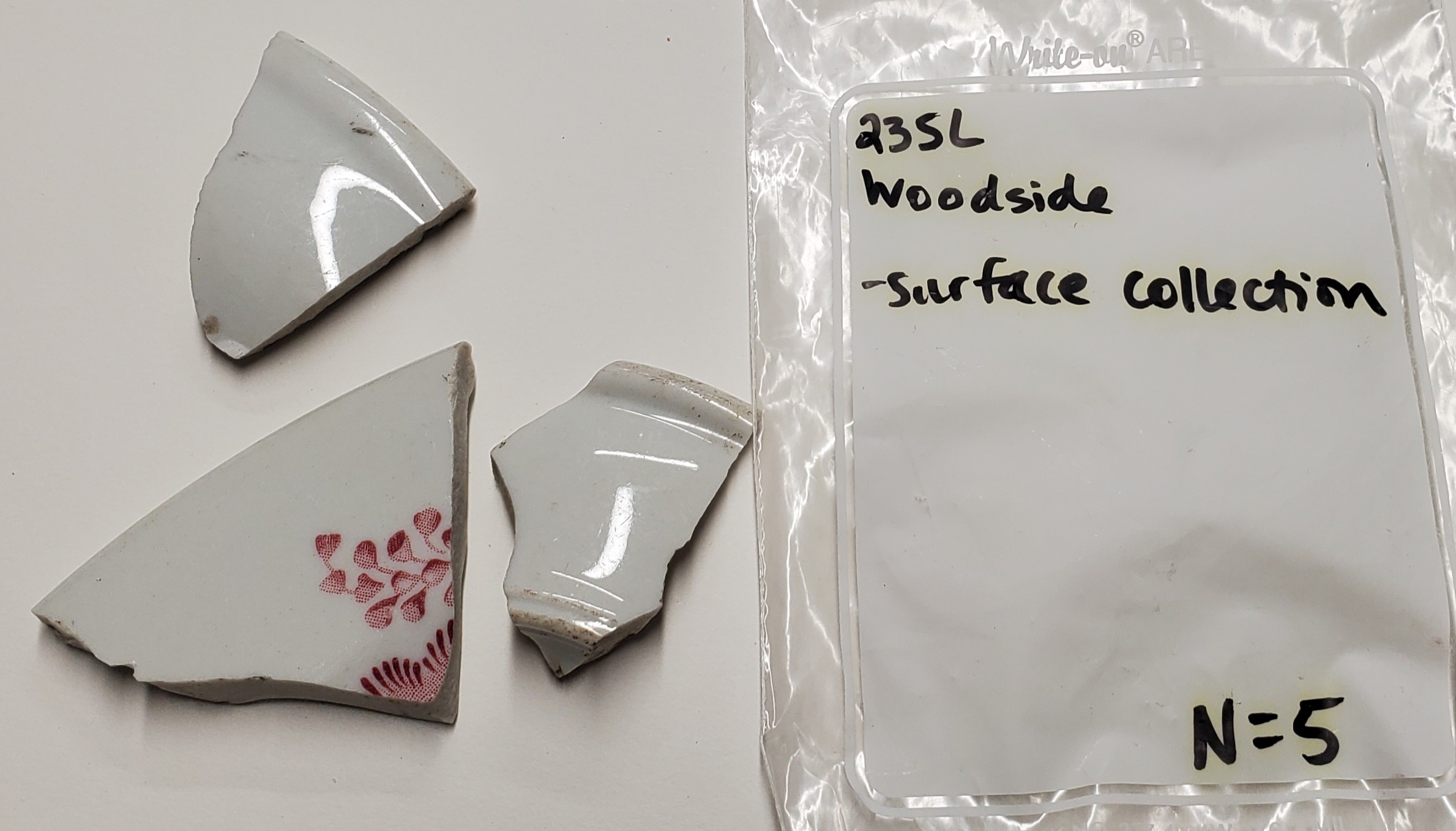
Some of the fragments that were found on the surface, in the yard, etc.

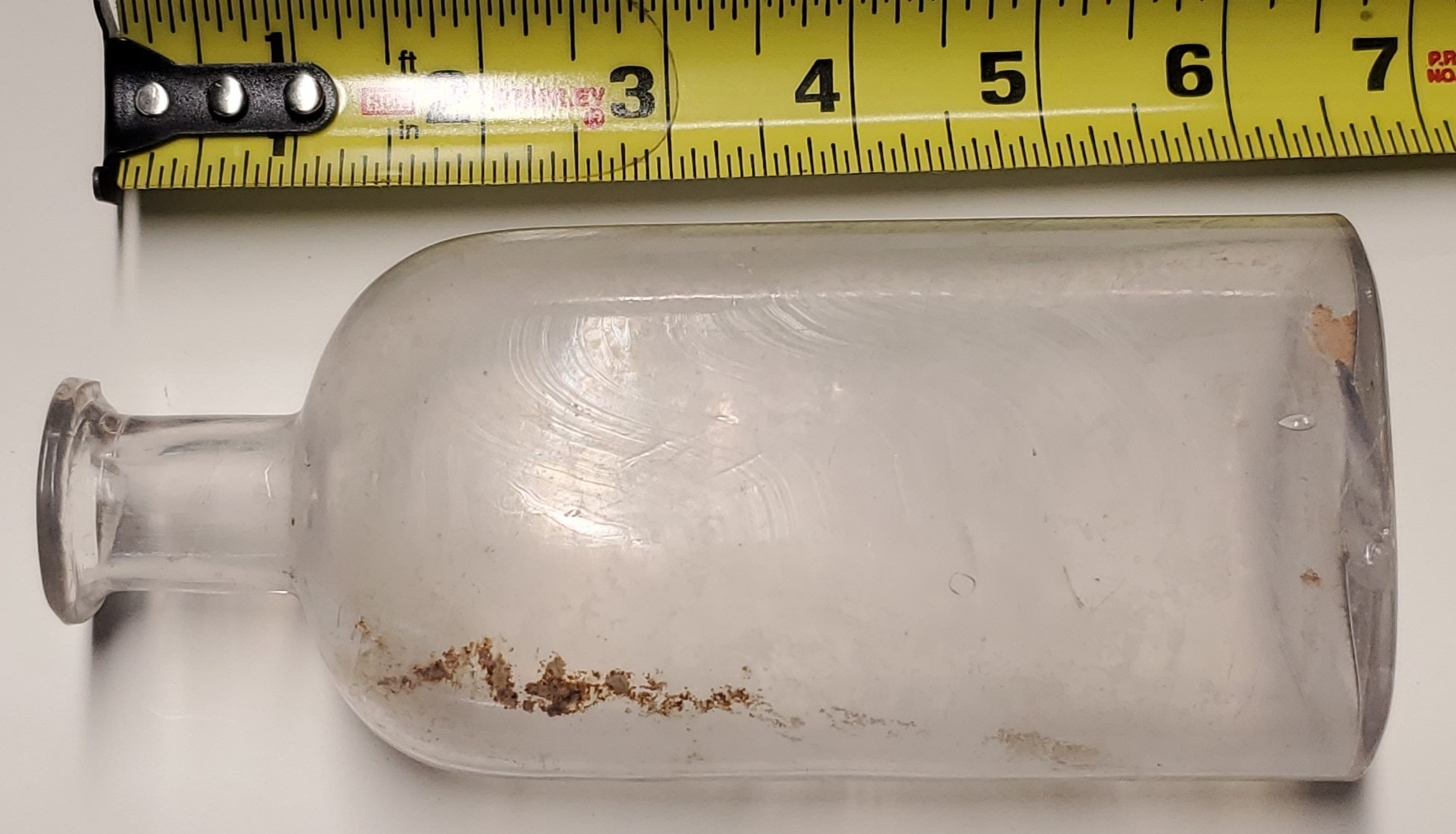
About 40 medicine bottles were recovered.
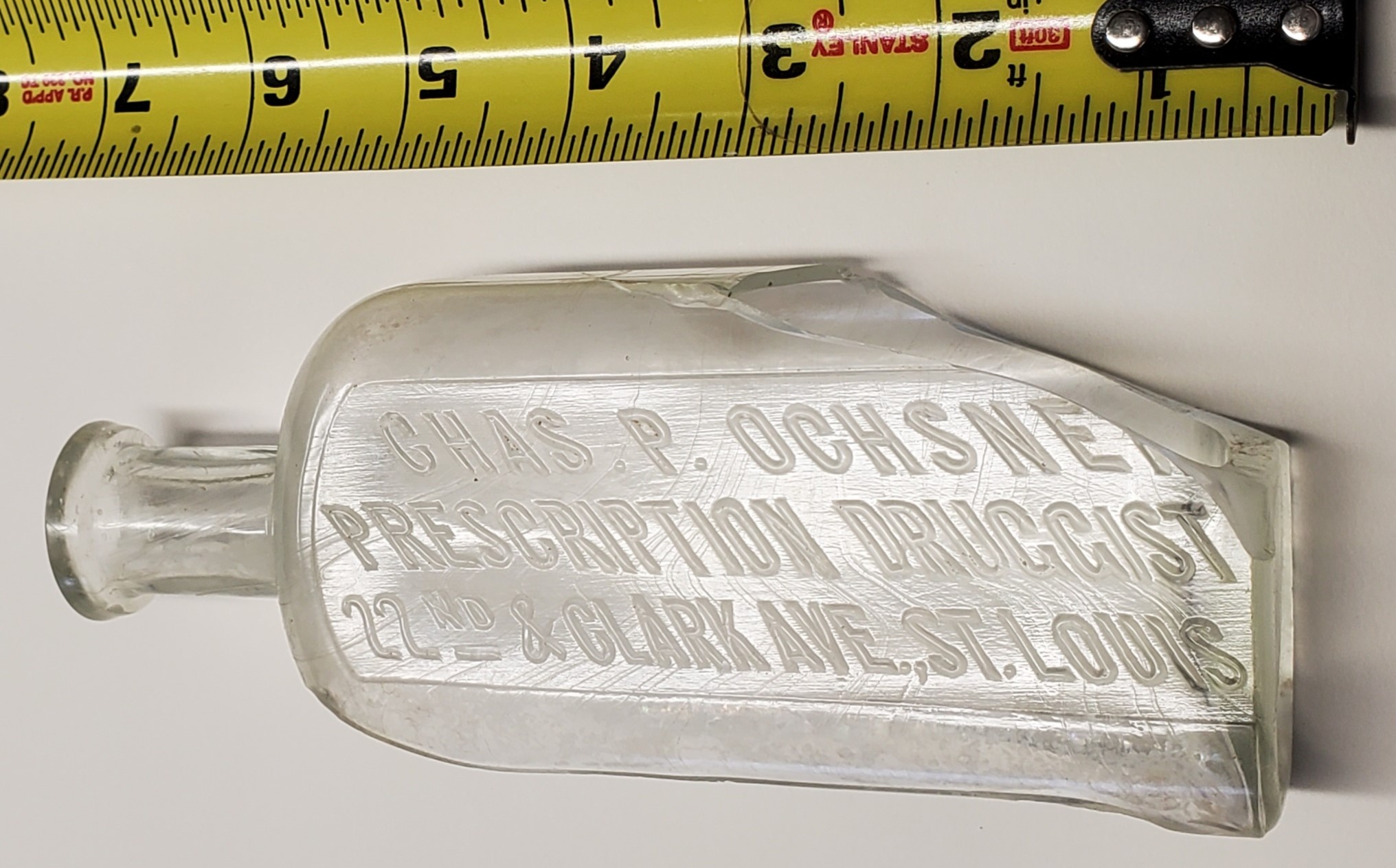
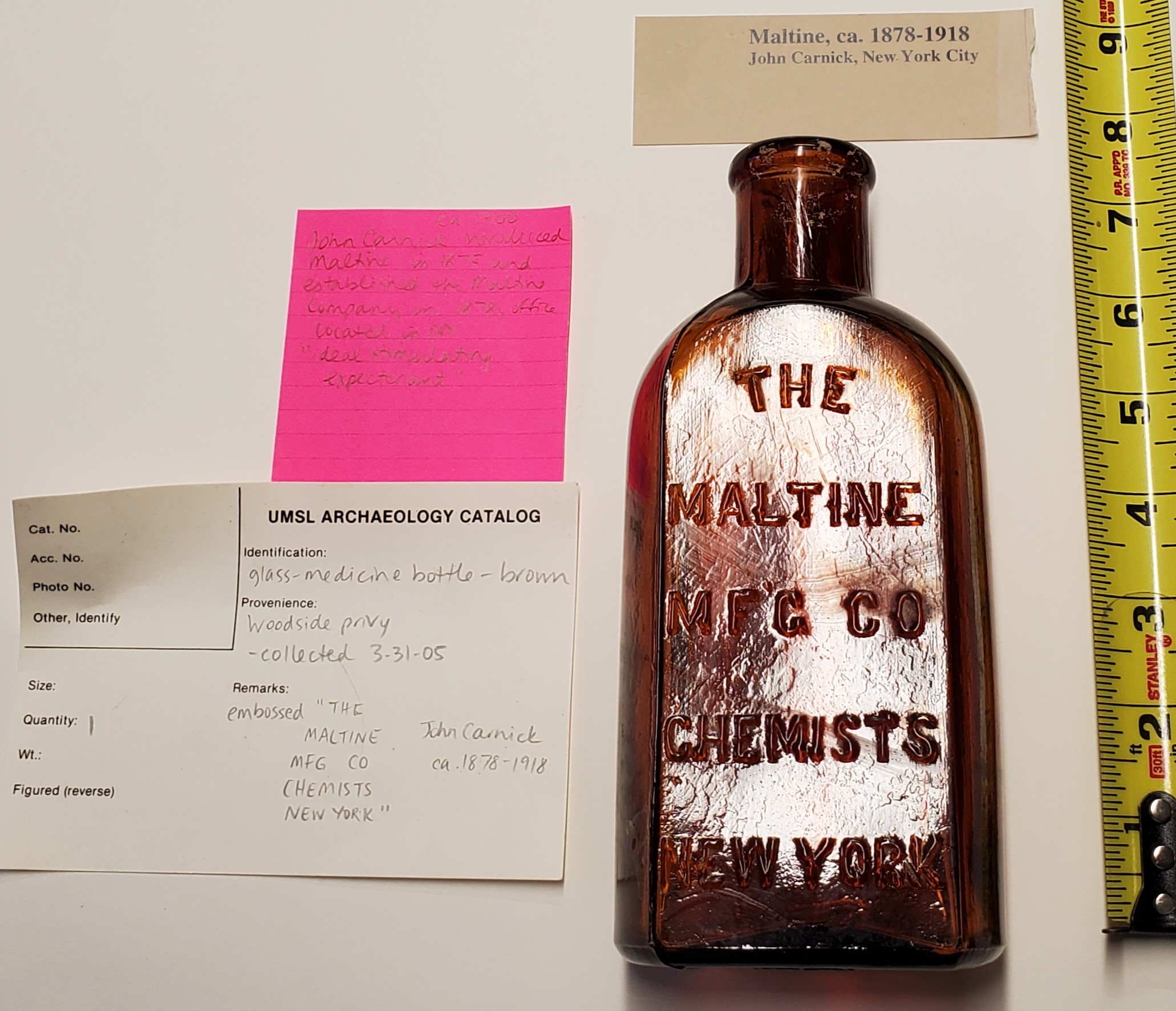
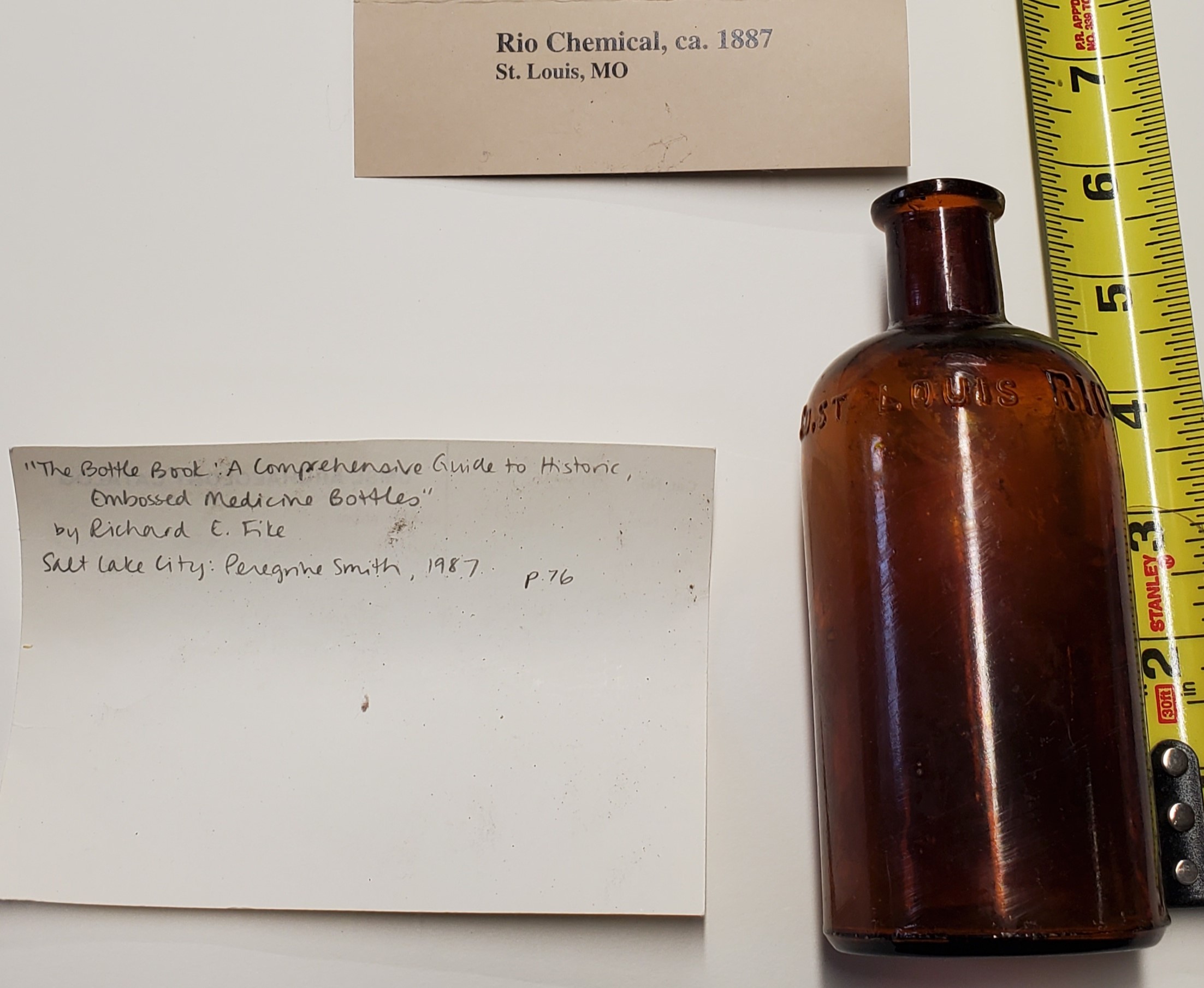
When the students could locate similar bottles in books, they recorded that information on the backs of the cards.
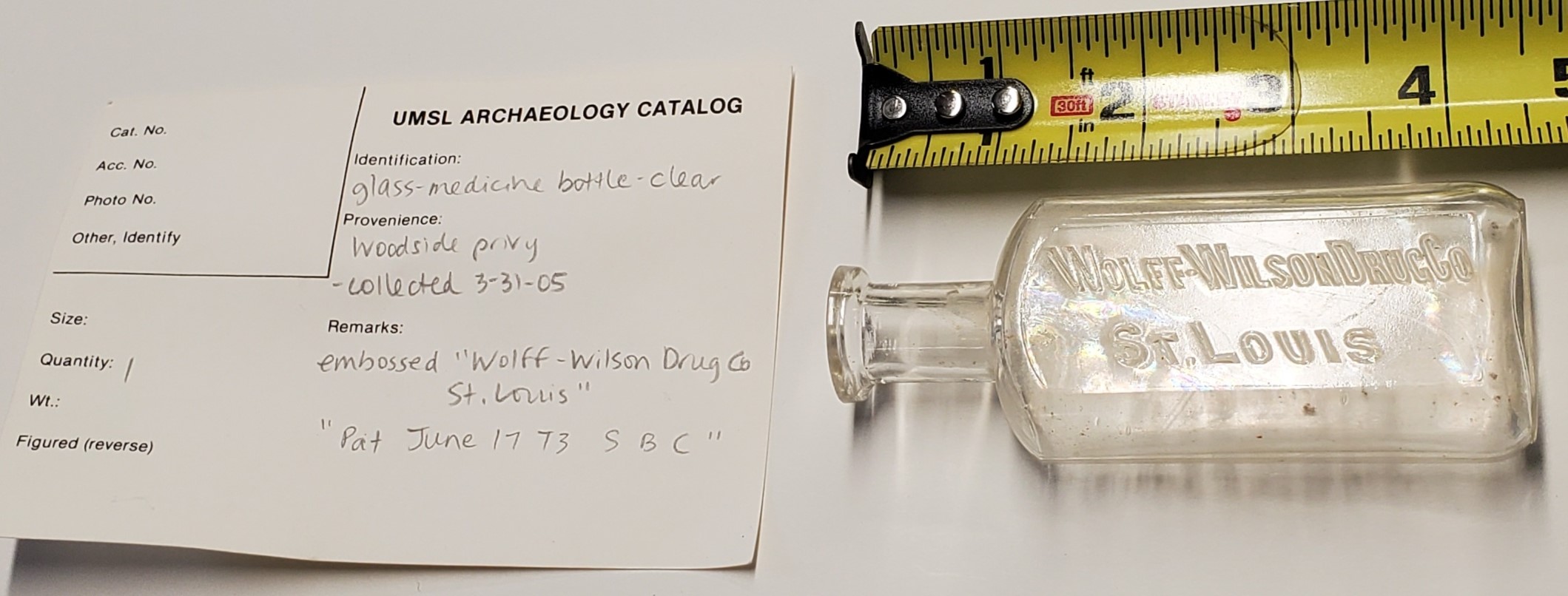
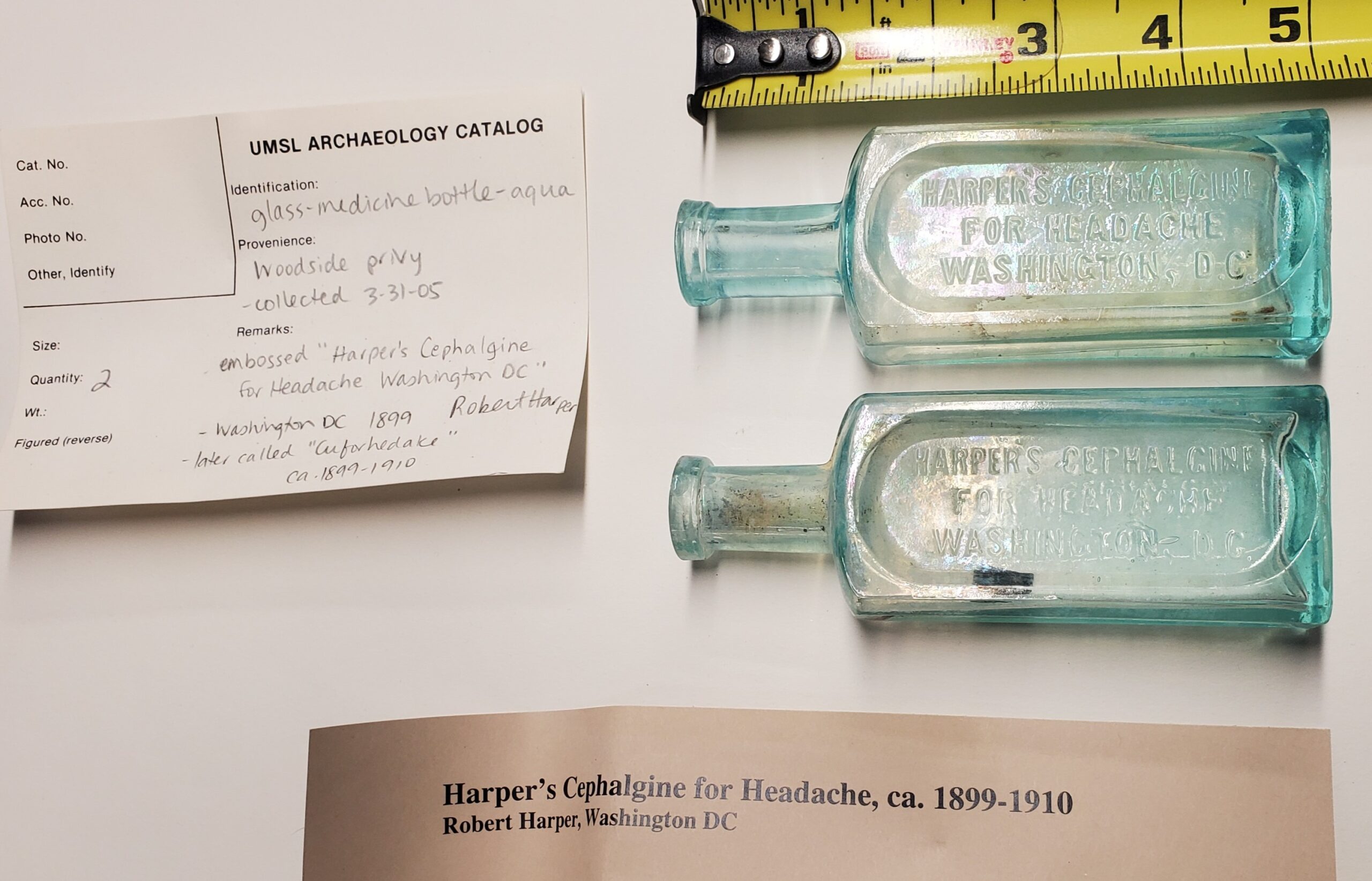
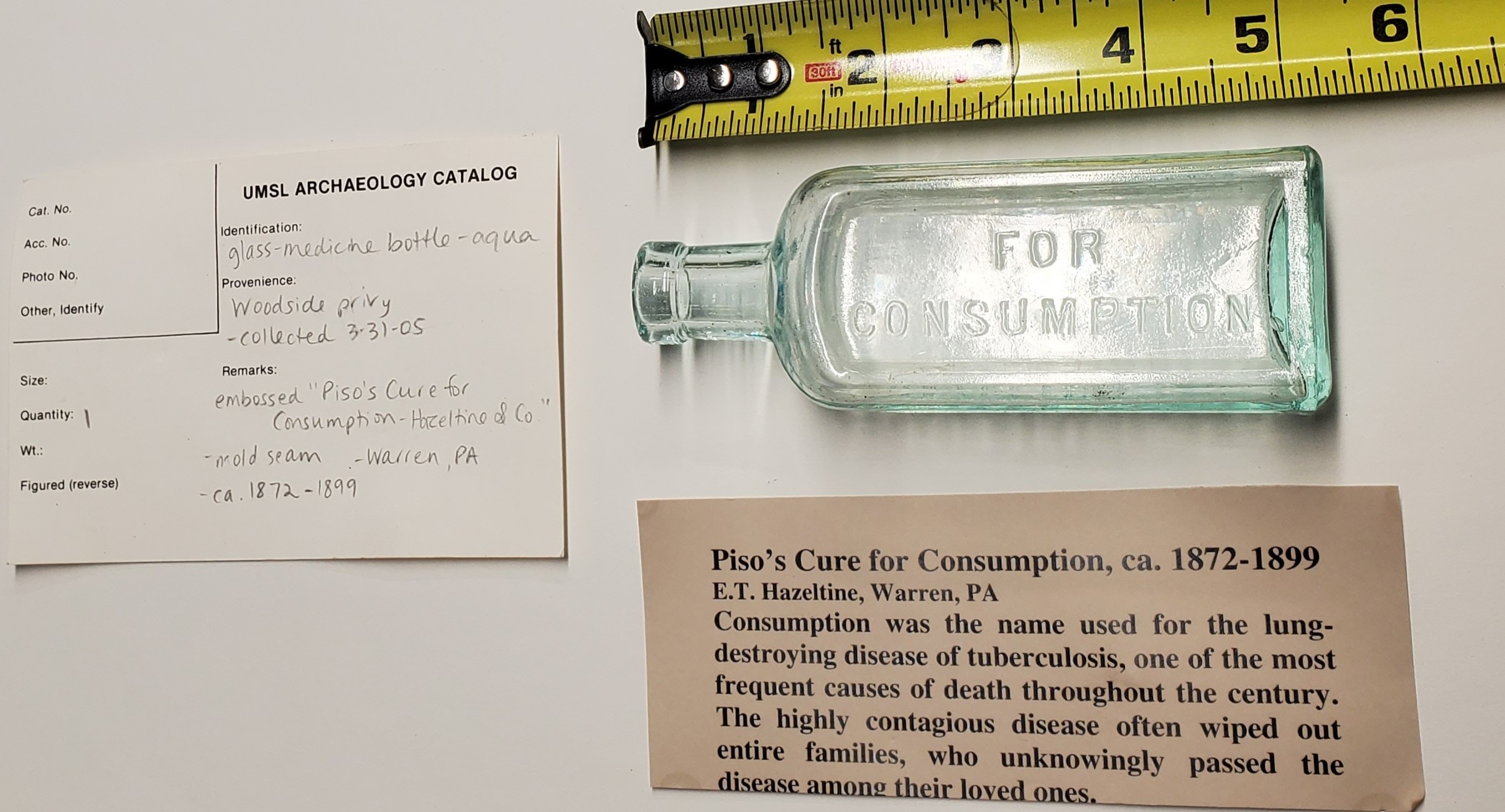
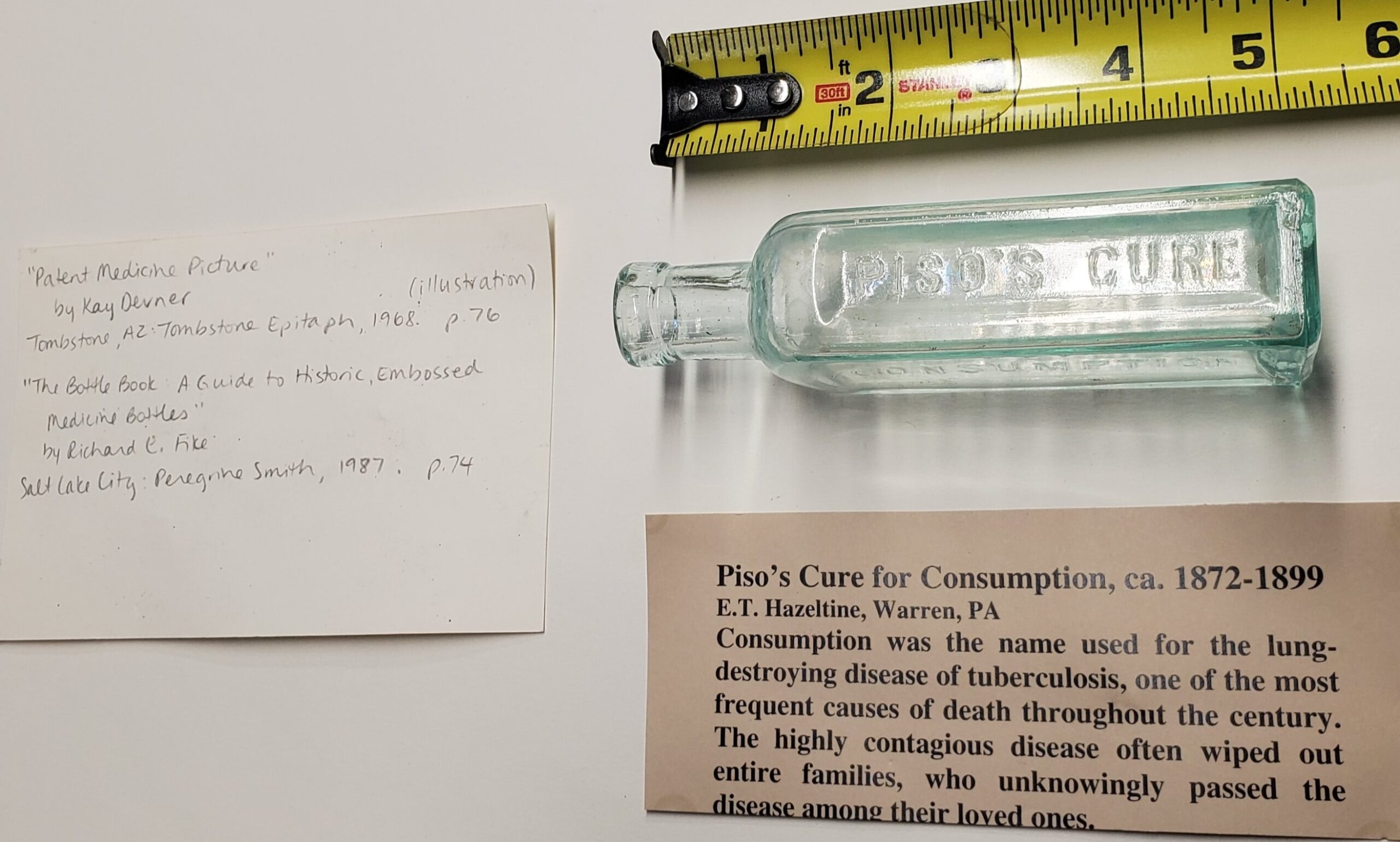
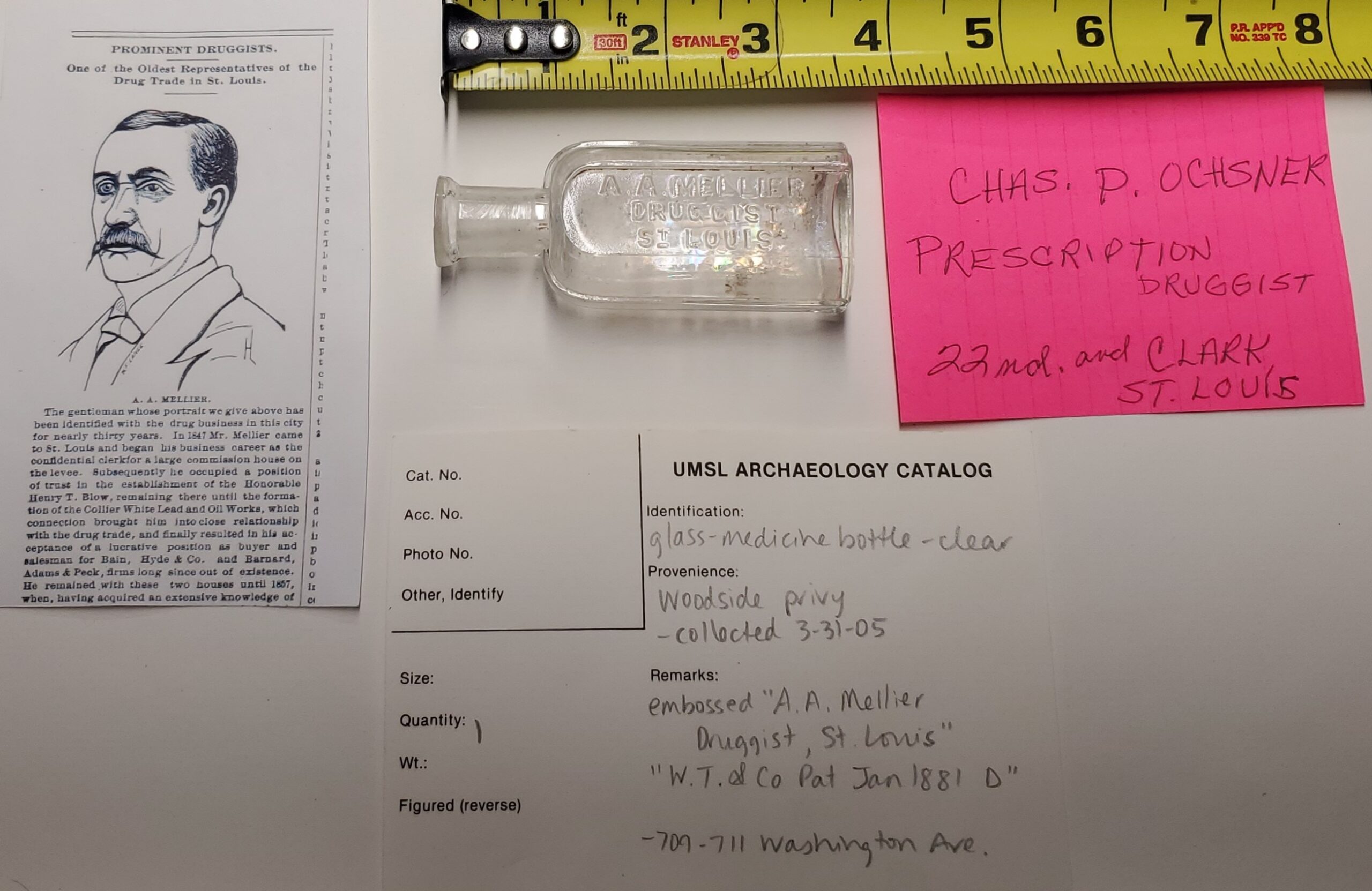
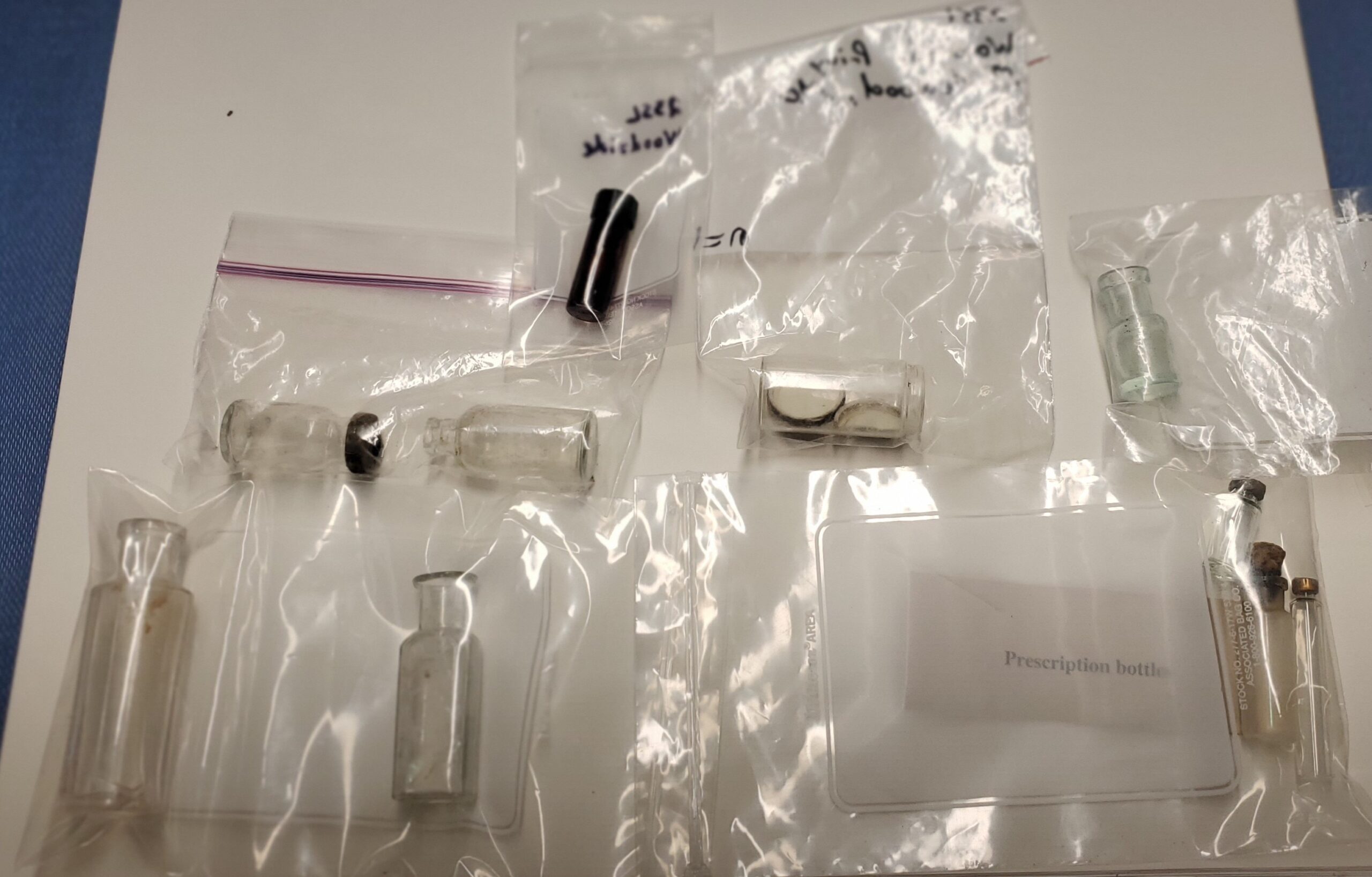
A lot of very small unlabeled bottles.

This has to be my favorite of the medicine bottles. What could be more invigorating than Beef, Iron and Wine? This product alone could support human life.
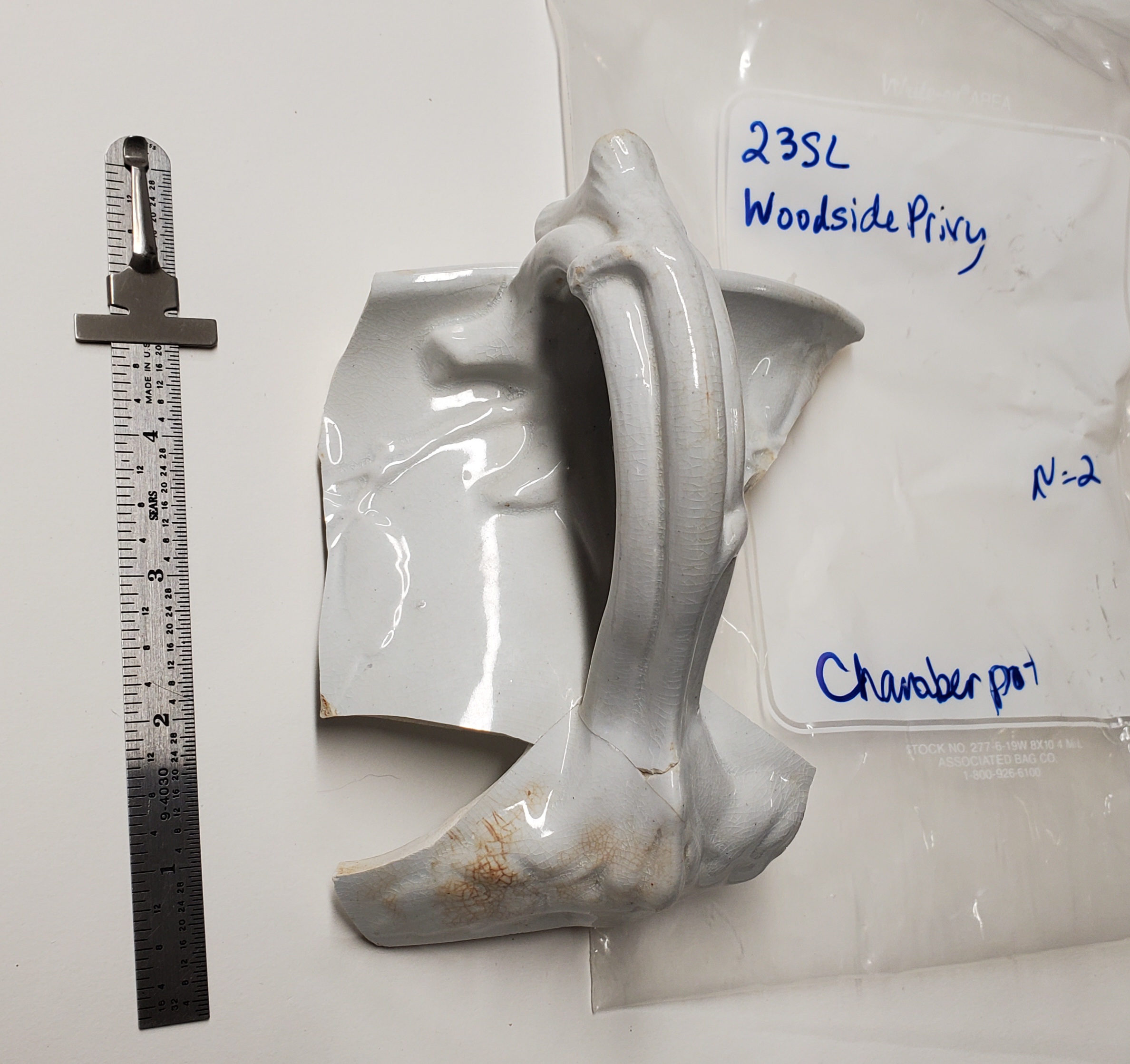
This is the handle of a chamber pot. Remember in the “good ol’ days” ordinary folks did not have a bathroom inside their houses. Think about what that must have been like in weather like we’ve been having lately.
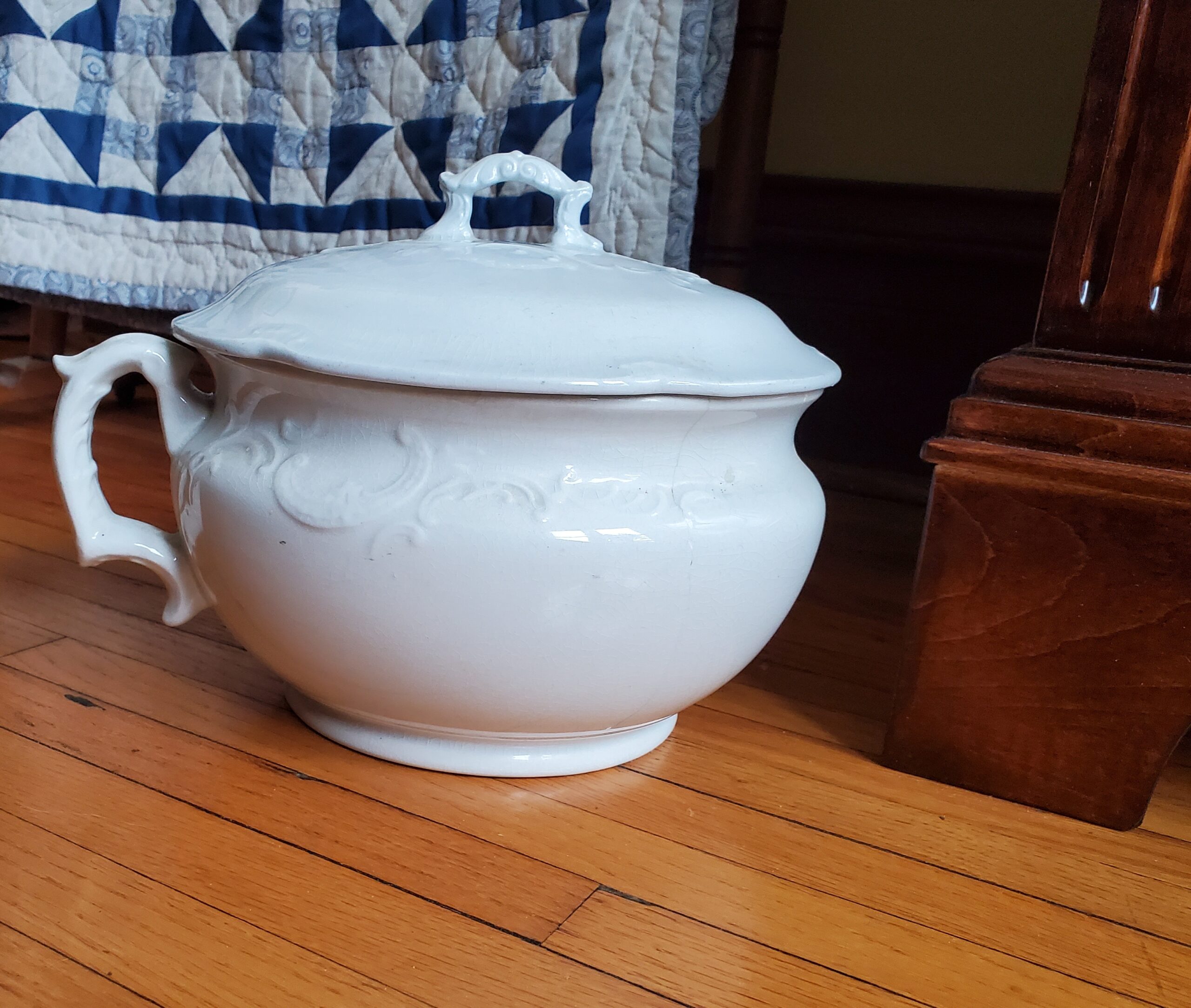
This is a complete Thunder Mug (chamber pot) that my wife and I picked up somewhere too many years ago to recall. The only thing we use it for now is to drink beer out of. I’m kidding. It’s full of dog toys.
Folks, if you don’t see the value of historic buildings such as Woodside and all of their attendant flotsam and jetsam, you may be reading the wrong column.
For about 17 years, from 1999 through 2016, I did everything I could think of to help Woodside survive short of buying it myself. And I nearly did that. In a way I’m glad, I couldn’t pull it off. I wasn’t as interested in seeing Woodside fully restored as I was interested in having an ongoing archaeology project for the very long term.
I’m convinced that it would have been worth it. Perhaps all but certainly part of Woodside was built by enslaved people owned by the Rannells family and others. What we might have found to contribute to the lost history of our local families of African descent would certainly have been worth it.
Myself and many others did all that we could. I’m not unhappy with the restored Woodside. I’m glad that it still exists. I’m unhappy about the lost opportunity to learn more about this fascinating community of ours.
Doug Houser January 16, 2024
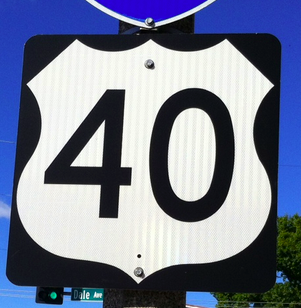
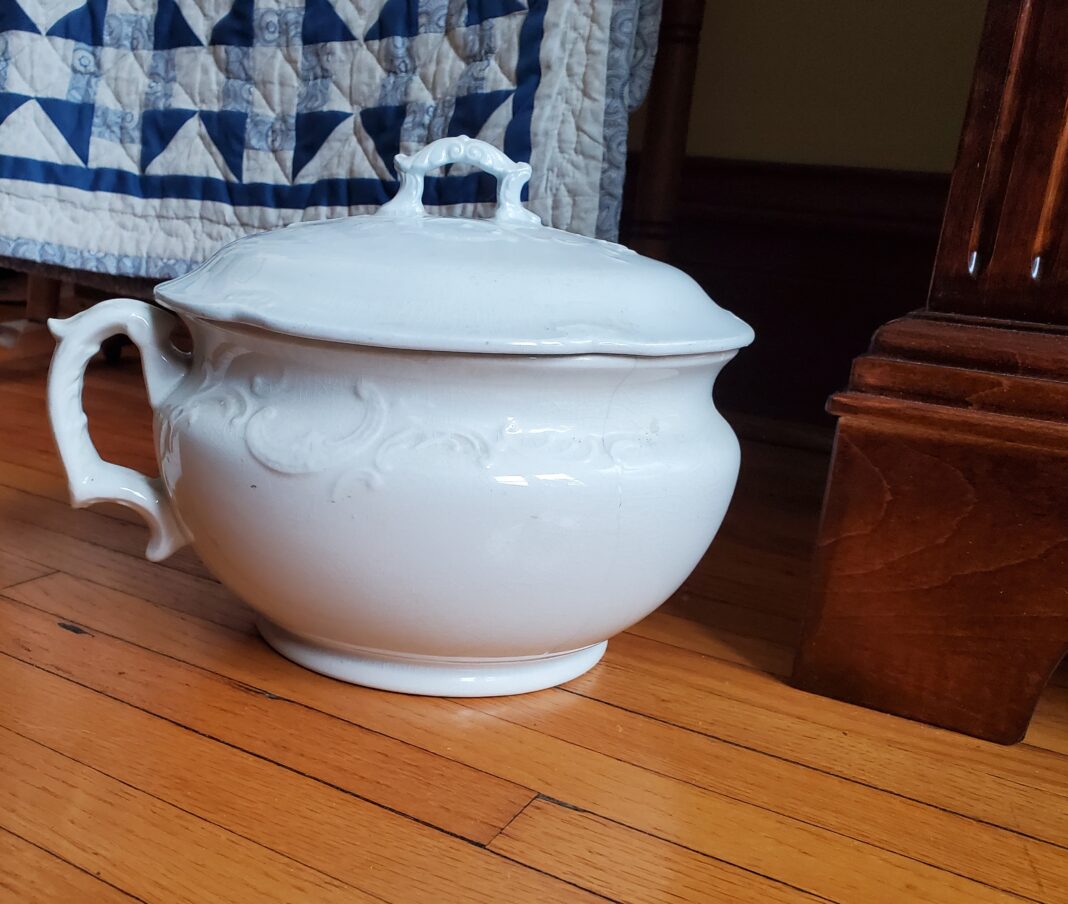
This is absolutely fascinating!! Thank you, Doug!! The care of these artifacts is outstanding!! By the way, I propose to you and your archeologists that the broken tiny ceramic spoon is not a toy. It could be related to pharmacology or from a drug store (pharmacy) for dosage ((have a history of pharmacists/druggists in my family going back more than a hundred years) But, perhaps more likely, 🔹I believe, it is a salt spoon…Depending on its size (hard to exactly tell). More well-to-do folks had small sets of silver spoons and small 2×1 1/2 x1 inch little silver dishes at elegant table settings with the salt in them. In kitchens, or lesser fancy settings, ceramics could have been used. Why I think so? I have a passed down set of the silver little salt spoons and mini salt dish.) 🔹
Regardless, the entire collection is amazing! Especially of interest to me is the great information on those bottles. Again, many druggist/pharmacy oriented? (Why interested? My great grandparents (both he and she) founded the original KC college of pharmacy over their drugstores…sold to Missouri state college system as they grew older & the young men were gone serving in WWll, etc. Now the University of Missouri College of Pharmacy, Kansas City.) Story goes, they sold the name and rights for $1. I still have a few things from there… microscope, brass scales with weights, etc. I probably also need to look for a home for them…probably in KC. Could pull them out to put with some of your bottles for a temporary display in the library or something. Fun reminiscing! Thx!!
Hey Pickett, I think that you may be right about the identity of the spoon. We have a similar one that we use. I’ll add that to the information with it. At present I have nothing scheduled to display this large lot. We’ve put up displays two or three times in the past. Laura Miller said she may be interested in mounting one sometime in the future but we haven’t pinned it down yet. When we do I think your items would be welcome. Thank you for the kind words.
What a cool find!
Could it be possible that this was the incinerator pit, rather than the privy? I grew up where we burned everything we could in the incinerator at the back of the yard, and took everything else to the dump. The soil could be rich and dark from the ashes.
Hi Patty, I know exactly the sort of pit that you describe. They were common in the country where trash pickup was either very expensive or nonexistent. In a burn pit there will be much evidence of the things burnt. Many items will have been distorted by the heat. There was none of that here. This was a privy. Thank you for your comments.
I lived with my parents at 7454 Flora in what was my Grandma Schmidt’s house prior to my Mom inheriting it in 1944. I left in Dec of 1962 and enlisted in the Army for 3 years. I think the house was built in 1904 and is still there, thoroughly modernized inside. I’d love to go through it again.
Upon discharge I went to work at Sunnen and we bought a house on Rannells that I think was built in the 20s.
I remember finding what may have been a privy in back of the Flora house and found pieces of bottles in it.
Your article is very interesting. As a youngster I rooted around in a couple of old houses, the Sutton House (across from Jay B Smith and the old Bartold place at the foot of Sunnen. I think there was a little tavern between that and the old railroad bridge if I remember.
Lots of great memories growing up in Maplewood.
Hey Don, Thank you for your memories. I’d love to know about your visits to the Sutton mansion and Bartold’s Inn. Anything you can remember would be welcome. Bartold’s Inn was later called Cool Cave Tavern. Do you remember a cave? Good to hear from you.
Please share the contact information for your local archeologists! I know of one who lives nearby who works in the Mound area of Illinois.Different artifacts to be sure, but just as important. If you’re looking for someone to ever help you id and do any more sorting of found artifacts, let me know! I’m researching paleontologists for a possible children’s book/play and would love to see one at work. Thanks for all you do to preserve the history of our community.
Thanks, Stacey. I appreciate your offer to help. Nothing is on the horizon but who knows what may happen next. I will inform my friend of your desire to contact her. I know that she is very busy so if you don’t hear back from us just assume that her schedule is already filled. Thank you for the kind words.
Thanks for this fascinating history. The pictures are outstanding!
We bought our home in Maplewood in 1986, but it was 1988 before we actually moved in, following my husband’s extensive renovation. Thanks so much, Doug, for your fantastic discoveries, history, and documentation concerning this area! I love reading about the history of Maplewood, and the pictures you provided are priceless!
Thanks, Linda. I think the pictures are very important. If I set things up right, my hope is that they will outlast all of us.
Such an awesomely interesting view of the Woodside privy contents. How excited you must have been and so lucky you were there to find and categorize these parts of history. Thank you for all the Maplewood history you share with us.
You’re welcome, Jan. I spent a lot of time at Woodside for several years back then. But you are right, I was very lucky to be standing there when those artifacts popped out.
I’ve lived in Maplewood since 1968 and I’ve learned so much about it’s history from your discoveries and findings and documentation. It’s sad that so much gets lost thru the years and even sadder that the younger generations do not see or appreciate how our past has shaped who we are now. Thank you for all your hard work and sharing your revelations
You’re very welcome, Pam. It is nice to be appreciated. Some of the younger ones are very interested.
Fascinating, Doug. I love stuff like this! Good to see you yesterday. Our best to Arlene.
Thanks for the enthusiasm, Ralf. It was good to see you as well. I’ll tell her.